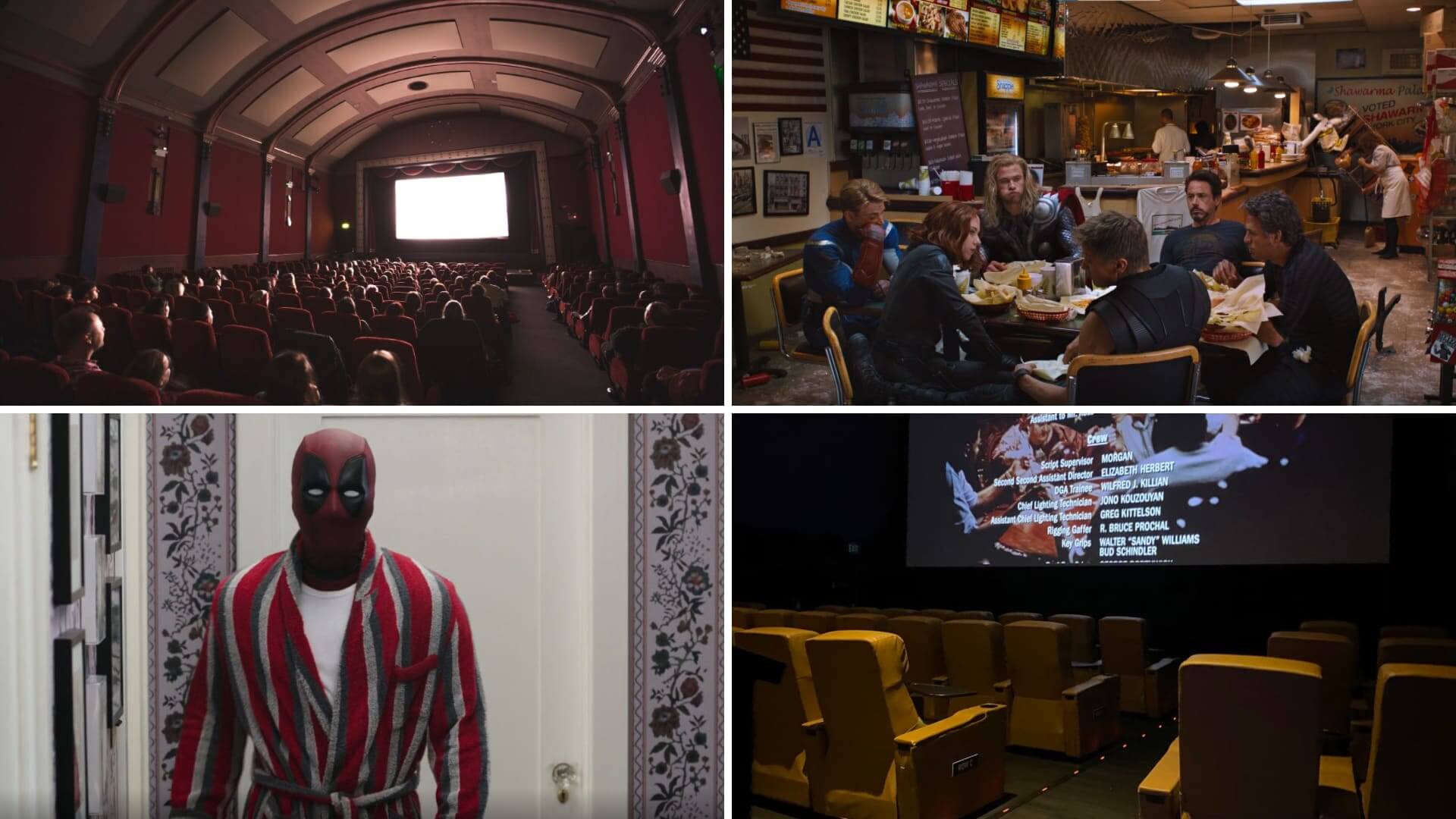Post-credit scenes have become a staple in modern cinema, leaving audiences eagerly waiting through the credits for an extra thrill. These scenes, often referred to as "post credit scene challengers," serve as a teaser for future films or provide additional context to the storyline. As the film industry continues to evolve, understanding the significance of these scenes has become essential for both casual viewers and cinephiles alike.
The popularity of post-credit scenes has grown exponentially over the past decade. What was once a rare occurrence is now a common practice in blockbuster films, particularly in franchises like Marvel and DC. These scenes not only enhance the viewing experience but also play a crucial role in building anticipation for upcoming releases.
In this article, we will delve into the world of post credit scene challengers, exploring their origins, significance, and impact on the film industry. Whether you're a fan of superhero movies or simply curious about the art of post-credit storytelling, this guide will provide valuable insights and information to deepen your understanding.
Read also:Bridget Everett Spouse Exploring The Life And Relationships Of A Beloved Artist
Table of Contents
- The History of Post Credit Scenes
- Why Post Credit Scene Challengers Matter
- Types of Post Credit Scenes
- Notable Examples of Post Credit Scene Challengers
- The Process of Creating a Post Credit Scene
- The Impact on Franchises
- Audience Reactions and Expectations
- The Future of Post Credit Scenes
- Statistics and Trends
- Conclusion and Final Thoughts
The History of Post Credit Scenes
Post-credit scenes may seem like a modern phenomenon, but their origins date back to the early days of cinema. The practice of including additional content after the credits began in the 1980s, with films like "Airplane!" using it for comedic effect. However, it wasn't until the release of "Iron Man" in 2008 that post credit scene challengers became a mainstream trend.
Since then, studios have embraced this technique as a way to engage audiences and create buzz around their franchises. The evolution of these scenes reflects the changing dynamics of storytelling in the film industry, where interconnected narratives and cinematic universes dominate.
Key Milestones in the Development of Post Credit Scenes
- 1980: "Airplane!" uses a post-credit scene for comedic purposes.
- 1987: "The Return of the Jedi" includes a brief post-credit sequence, setting the stage for future Star Wars films.
- 2008: "Iron Man" introduces the concept of post credit scene challengers in mainstream cinema, teasing the formation of the Avengers.
Why Post Credit Scene Challengers Matter
Post credit scene challengers serve multiple purposes in modern films. They act as a bridge between sequels, providing hints about upcoming storylines or introducing new characters. For studios, these scenes are a marketing tool that generates excitement and anticipation among fans.
From a storytelling perspective, post-credit scenes allow filmmakers to explore alternative narratives or offer additional context to the main plot. This adds depth to the overall cinematic experience and keeps audiences engaged even after the film has ended.
Types of Post Credit Scenes
Not all post credit scene challengers are created equal. They can be categorized into several types based on their purpose and content:
1. Teaser Scenes
These scenes tease upcoming films or events in the franchise, often introducing new characters or storylines. Examples include the post-credit scene in "Avengers: Endgame," which set the stage for the next phase of the Marvel Cinematic Universe.
Read also:Famous Actress In Bikini Unveiling Their Journey Style And Influence
2. Explanatory Scenes
These scenes provide additional context or closure to the main storyline. They help clarify plot points or resolve unanswered questions, enhancing the viewer's understanding of the film.
3. Humorous Scenes
Some post credit scene challengers are purely for entertainment, offering comedic relief or a lighthearted moment after the main film. This is especially common in films with a comedic tone.
Notable Examples of Post Credit Scene Challengers
Over the years, several post credit scene challengers have left a lasting impact on audiences. Below are some of the most memorable examples:
- "Iron Man" (2008): The introduction of Nick Fury and the concept of the Avengers Initiative.
- "The Avengers" (2012): A humorous scene featuring the cast enjoying shawarma after saving the world.
- "Avengers: Infinity War" (2018): The post-credit scene revealing Spider-Man's fate, leaving fans in suspense.
The Process of Creating a Post Credit Scene
Creating a post credit scene challenger involves careful planning and execution. Filmmakers must decide whether to shoot the scene separately or integrate it into the main production schedule. The content of the scene is often kept secret until the film's release to maintain the element of surprise.
According to industry experts, the average cost of producing a post-credit scene ranges from $1 million to $5 million, depending on its complexity and special effects requirements. Despite this expense, studios view it as a worthwhile investment due to the potential return in terms of audience engagement and marketing value.
The Impact on Franchises
Post credit scene challengers have significantly influenced the success of franchises like Marvel and DC. By teasing future films and expanding the universe, these scenes create a sense of continuity and interconnectedness that resonates with audiences. This strategy has proven to be highly effective in maintaining fan interest and driving box office success.
For example, the Marvel Cinematic Universe has built a loyal fanbase through its strategic use of post-credit scenes. Each scene adds layers to the overarching narrative, encouraging viewers to return for subsequent installments.
Audience Reactions and Expectations
Audience reactions to post credit scene challengers vary widely, depending on the quality and relevance of the content. While some viewers eagerly anticipate these scenes, others may feel frustrated if they are overly cryptic or fail to deliver on expectations.
To meet audience expectations, filmmakers must strike a balance between providing enough information to intrigue viewers while leaving room for mystery. This delicate balance is key to ensuring that post-credit scenes remain a compelling addition to the cinematic experience.
The Future of Post Credit Scenes
As technology continues to advance, the possibilities for post credit scene challengers are virtually limitless. Studios are exploring new ways to incorporate augmented reality, virtual reality, and interactive elements into these scenes, enhancing the viewer's engagement with the content.
Additionally, the rise of streaming platforms has opened up new opportunities for post-credit storytelling. With the ability to release additional content directly to subscribers, studios can create more personalized and immersive experiences for their audiences.
Statistics and Trends
Data from recent years highlights the growing popularity of post credit scene challengers. According to a study by Nielsen, 75% of moviegoers stay through the credits to watch post-credit scenes, while 60% consider these scenes a deciding factor in their decision to see a sequel.
Furthermore, social media platforms have become a hub for discussions and theories surrounding post-credit scenes. Fans often share their interpretations and predictions, creating a vibrant online community centered around these cinematic extras.
Conclusion and Final Thoughts
Post credit scene challengers have become an integral part of modern cinema, enriching the storytelling experience and engaging audiences in new and exciting ways. From their humble beginnings in the 1980s to their current status as a marketing powerhouse, these scenes continue to evolve and captivate viewers worldwide.
We encourage you to share your thoughts and favorite post-credit scenes in the comments below. Additionally, don't forget to explore other articles on our site for more insights into the world of cinema. Together, let's celebrate the art of post-credit storytelling and its enduring impact on the film industry.

